Premier League
World Cup roundup: Morocco makes waves, Portugal better without Ronaldo
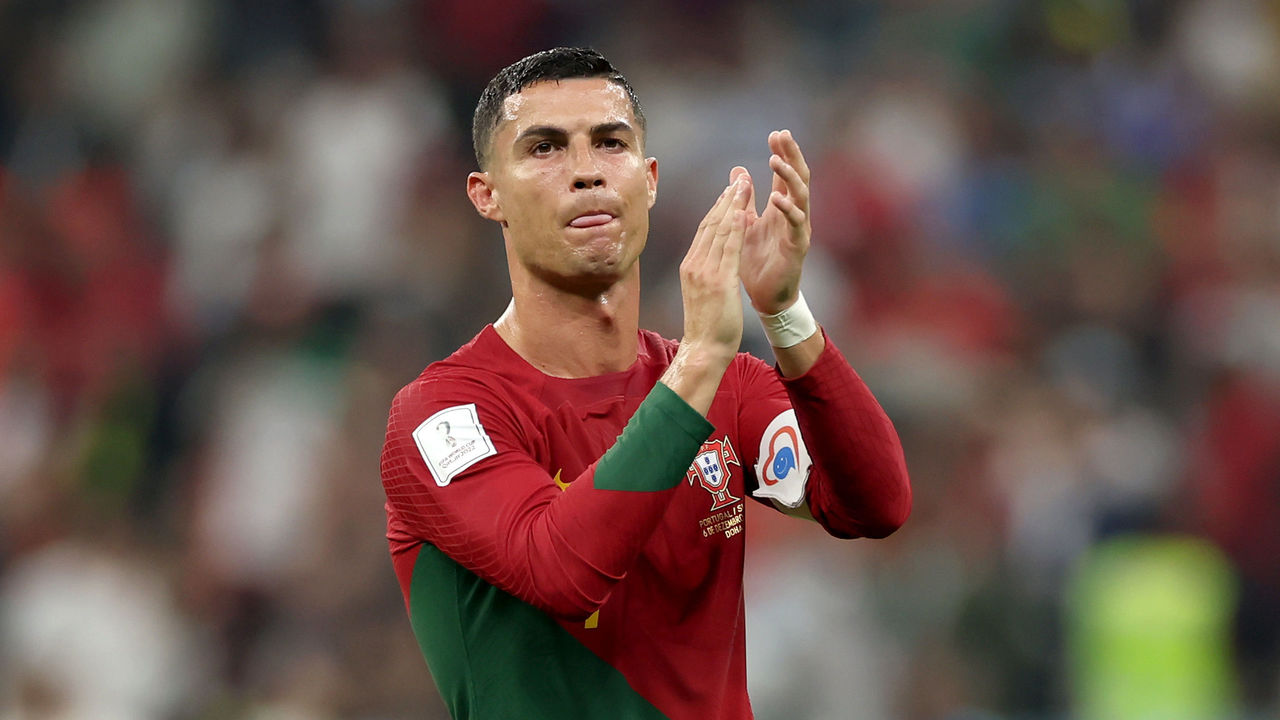
The 2022 World Cup is in full swing. At the end of every matchday, we’ll review the biggest talking points emanating from Qatar and break down all the action on the pitch. Below, we look back on Tuesday’s last-16 games.
Refreshed without Ronaldo
The problem with Cristiano Ronaldo – well, aside from the stroppiness that ruptured his relationship with Manchester United – has been evident for a while now. His stepovers are less bewildering, and his runs are less piercing since time has run its course, leaving a 37-year-old attacker whom teams must oblige.
It’s rare that a modern side can carry a player who can sometimes be so static. He scores goals – he netted 18 times over 30 Premier League outings for Manchester United last season – but the question was always how much his colleagues would produce if he wasn’t there. Playing to Ronaldo’s strengths didn’t necessarily play to United’s. These concerns were top of mind when numerous clubs ruled themselves out of signing Ronaldo when he submitted a transfer request last summer.
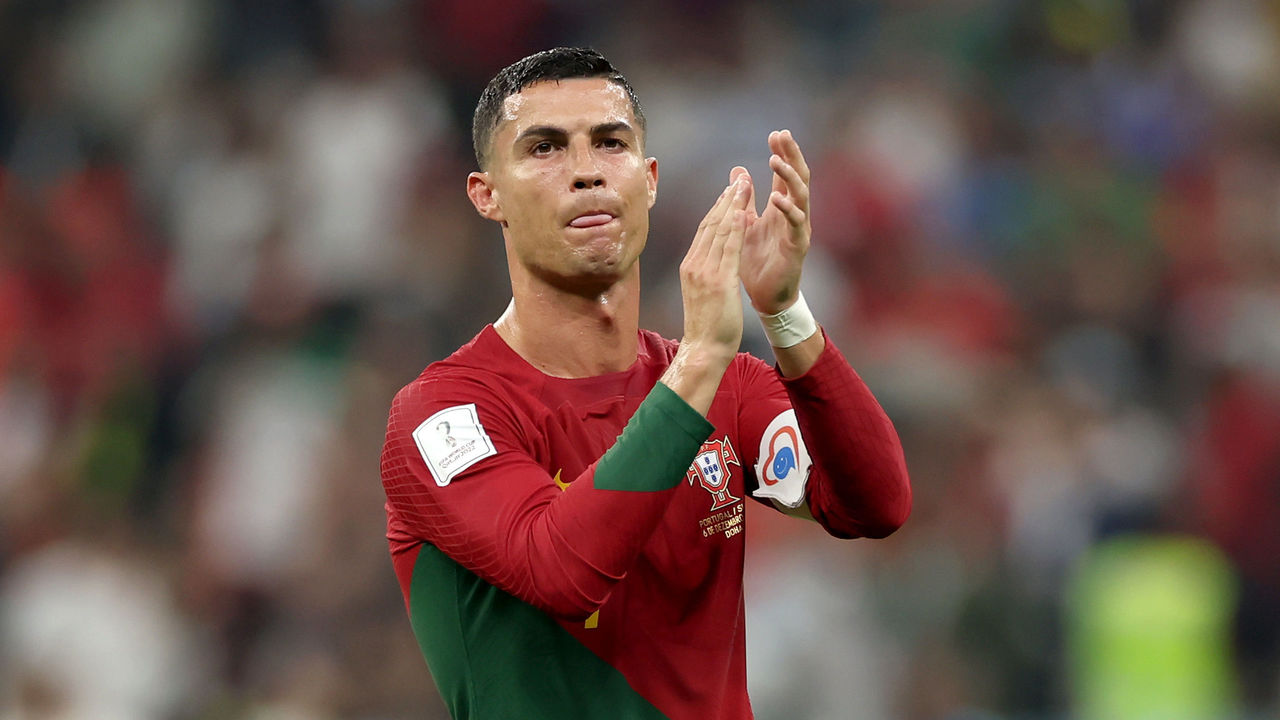
Ronaldo is now a free agent and, for the first time since 2008, on the bench at a major international tournament. Judging from the evidence of United’s most recent performances and Portugal’s 6-1 round of 16 rout of Switzerland, his former club and country might be better off without him.
It’s a disappointing swansong for a footballer who’s undoubtedly one of the greatest to ever grace the planet. Along with Lionel Messi, he’s swept up countless individual records. He’s won five Champions League titles, seven domestic championships, and numerous other accolades in club football and helped Portugal win Euro 2016.
But, while everyone accepted the sorry sight of an all-time great’s powers dwindling, Ronaldo was in denial. He’s used to being the talisman. His ego harmed his reputation at Manchester United and – following his angry reaction to being substituted during Portugal’s final group game – resulted in him watching his replacement against Switzerland, 21-year-old Goncalo Ramos, hit a hat-trick in his first-ever Selecao start.
The veteran marksman can still be a hero for Portugal at this tournament – this is Ronaldo, after all – but the superstar won’t currently look back on his 2022 in football with great pride.
Morocco defended like lions
Nobody, player or otherwise, is bolstering their reputation in Qatar quite like Walid Regragui. Prior to being named Morocco manager in August, the 47-year-old, a former defender, was coaching in his homeland with Wydad AC.
All he’s done in the intervening months is author a historic World Cup run, transforming Morocco into an endearing side that’s nearly impossible to penetrate; Tuesday’s memorable shootout win over Spain made the Atlas Lions the first Arab nation, and only the fourth African team, to ever reach the World Cup quarterfinals. And Morocco deserved every last bit of the manic celebrations that Achraf Hakimi’s deft Panenka sparked in Ar Rayyan.
No team at this World Cup has been more organized, resolute, and difficult to break down. Regragui’s side, with Sofyan Amrabat bulldozing the opposing midfield, Romain Saiss anchoring the backline, and every player working in perfect defensive unison with one another, has conceded just one goal in Qatar. And even that was an own goal. Since Regragui took the job in late August – now a span of seven matches – Morocco hasn’t conceded a single goal scored by an opposing player. Morocco shut down Croatia and Belgium before rendering Spain’s possession futile. Even in the shootout against La Roja, Yassine Bounou’s goal wasn’t breached.

Morocco, the only team from outside Europe or South America remaining in the World Cup, is being spurred on by raucous support at every match. The Moroccan fans have arguably been the loudest of the tournament, creating a partisan atmosphere for every match. The whistles coming from the crowd as Spain passed the ball around on Tuesday were deafening. The fans roared with every Amrabat tackle, every Saiss clearance, and every bit of trickery and skill from wide attackers Hakim Ziyech and Sofiane Boufal.
With a watertight backline, individuals capable of winning a game at any moment, and a de facto home-field advantage, Morocco has all the ingredients necessary to keep this inspiring run going.
Familiar failings for impotent Spain
For Spain, Tuesday’s defeat was eerily similar to 2018. Equally painful, too.
The European heavyweight hoarded possession against Morocco, just as it did four years ago in its last-16 match with host nation Russia. Spain attempted over 1,000 passes at Education City Stadium, an obscene benchmark it also eclipsed against the Russians. And, just like four years ago, Spain eventually lost on penalties, tripping over the first knockout hurdle.
At least the Spaniards actually converted some of their spot-kicks on that occasion, unlike Tuesday’s feeble display from 12 yards out.
“It was a pity. It was decided on penalties in the most cruel way,” said veteran midfielder Sergio Busquets, whose weak penalty was thwarted by Bounou. “It was tough, very hard for us. We tried to wear them down, give them the run-around, find spaces. We lacked that little luck for the final ball.”
This wasn’t a matter of luck, though. Spain, for all its possession and sideways passing, didn’t show any ability – or desire – to alter its approach, even as it kept running headfirst into a red wall of unyielding Moroccan defenders. Trusting in your style is one thing. A stubborn unwillingness to adapt is dangerous. Spain and Luis Enrique were undone by inflexibility.
1 – Teams with the most passes attempted in a World Cup game since at least 1966:
1115 – Spain ?? vs Russia ?? 2018.
1058 – Spain ?? vs Japan ?? 2022
1045 – Spain ?? vs Costa Rica ?? 2022
1019 – Spain ?? vs Morocco ?? 2022Dominator. pic.twitter.com/e0WgV3RDK5
— OptaJose (@OptaJose) December 6, 2022
Of those four matches listed above, Spain won just once against an inferior Costa Rican side that waived the white flag after conceding early goals. Possession, as it turns out, can be in vain. If anything, Spain’s tiki-taka approach, lauded by Spanish purists, is first and foremost a form of defense; Spain conceded higher quality chances than any other team that reached the knockout stage in Qatar. Keeping the ball was a defense mechanism.
Spain only managed two shots on target over 120 minutes on Tuesday. Morocco, meanwhile, actually created the best chance of the game despite not seeing the ball for huge portions of the match. Were it not for the meek finishing of unimpressive substitute Walid Cheddira, Morocco would have won before the shootout. You could argue that it was Morocco that was unlucky.
Perhaps it’s time for a rethink in Spain.
Quick free-kicks
Who is Goncalo Ramos?

Ramos’ goal-scoring exploits in the UEFA Youth League and at the 2019 European Under-19 Championship always hinted at his huge potential. However, it took a combination of former Benfica B coach Nelson Verissimo taking interim charge of the senior side between January and June of this year and Darwin Nunez’s blockbuster summer move to Liverpool for Ramos to earn a prolonged run in Benfica’s first team. The prodigy only made his Portugal debut on Nov. 17 but forced his way into the World Cup squad with a sublime record of 14 strikes in 21 appearances for Benfica this season. Now try to get him out of the lineup: He’s the first player to score a hat-trick in his full World Cup debut since Germany’s Miroslav Klose in 2002.
Amrabat leads the way for Morocco
Amrabat was, in no uncertain terms, a monster on Tuesday. The Moroccan midfielder crafted one of the best individual performances of any player thus far in Qatar, providing a one-man shield that continually flummoxed Spain and forced the likes of Pedri and Gavi, two of the game’s most technically gifted midfielders, to turn back and recycle possession. They couldn’t find a way past the relentless Fiorentina man, who somehow kept finding reserves of energy to race around the pitch, harry his Spanish counterparts, throw his body into tackles, and then get right back up and do it all over again. Every time Spain approached the penalty area, Amrabat was there to offer resistance. He recovered the ball nine times, won seven duels, made four tackles, and had an interception and clearance, just for good measure. It was a heroic display that will have the Fiorentina brass awaiting some big-money offers in the January transfer window.
Enrique’s homework doesn’t pay off

Ahead of the World Cup, Spanish boss Enrique gave his players some homework. Enrique, an obsessive football mind who leaves nothing to chance, asked each player to practice 1,000 penalties before arriving in Qatar in case La Roja needed a shootout to advance at any point. “It’s a moment of maximum tension, a time to show your nerve, and that you can shoot the penalty in the way you have decided if you have trained it a thousand times,” he said. Penalties, contrary to what many suggest, are not a “lottery.” Enrique’s right about that. But judging by the mediocre efforts of Pablo Sarabia, Carlos Soler, and Busquets, each of whom failed to convert from 12 yards after powerless attempts, maybe his players didn’t do the assigned homework. Spain has now lost four of its five penalty shootouts at the World Cup – more than any team in history – and became only the second side to get blanked in a World Cup shootout. Best-laid plans.
Ironic twist for Hakimi
Hakimi, inarguably Morocco’s most illustrious player, was born in Madrid and spent over a decade representing Spanish giants Real Madrid at various levels before departing the country. He opted to play for the Atlas Lions, the nation of his parents’ birth, over Spain. How different things could have been. The thought was impossible to ignore as he dominated the right flank on Tuesday, and especially came to the fore when he clipped in the decisive Panenka to end the shootout and send Morocco to the next round. Meanwhile, Spain opted to start Marcos Llorente, a natural midfielder, at right-back in the game thanks to a limited pool of talent at the position.
Stat of the day
Vindication for Fernando Santos.
1 – Gonçalo Ramos scored more goals for Portugal in the World Cup knockout stages after 17 minutes (1) than Cristiano Ronaldo has in 514 minutes played in the competition’s knockout rounds (0). Vindicated. pic.twitter.com/akYz7qNgvS
— OptaJoe (@OptaJoe) December 6, 2022
Tweet of the day
What was Ronaldo really thinking while celebrating Ramos’ goals?
Cristiano Ronaldo smiling and applauding that fourth goal pic.twitter.com/WXs47vr0gi
— Amitai Winehouse (@awinehouse1) December 6, 2022
Copyright © 2022 Score Media Ventures Inc. All rights reserved. Certain content reproduced under license.
You may like
Premier League
Breaking down thrilling EPL title race with 10 games left
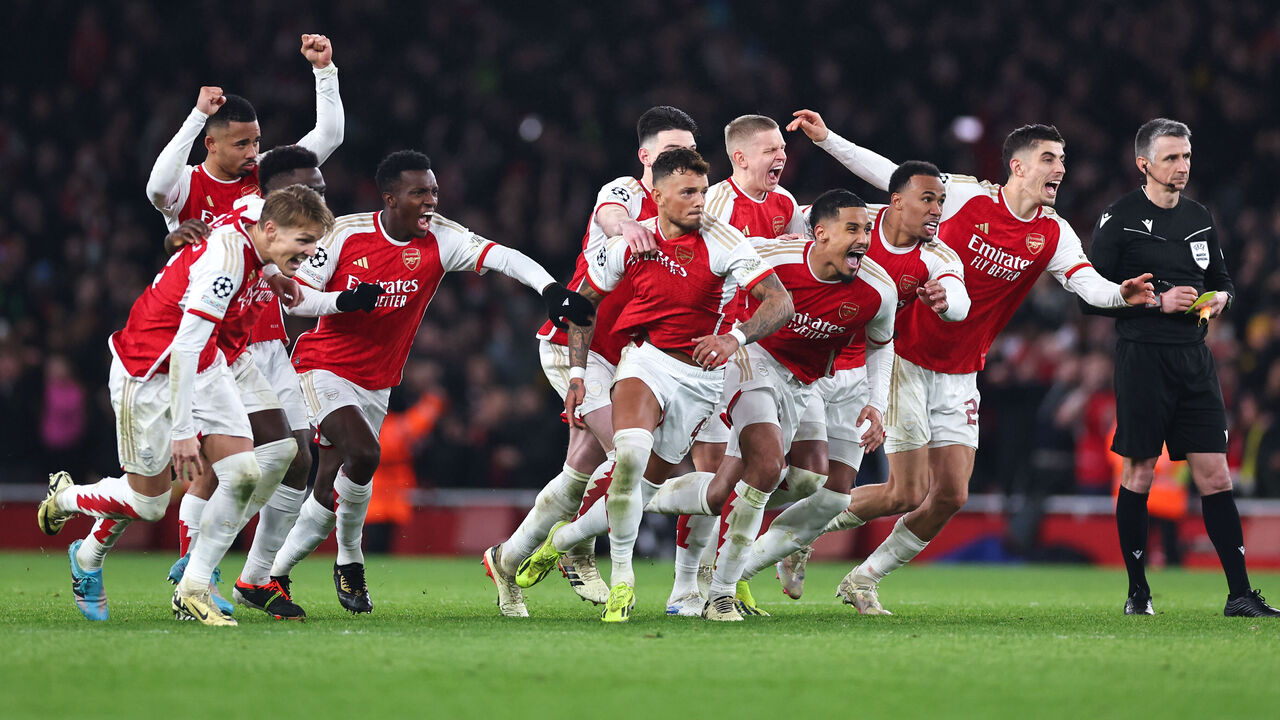
Find the biggest stories from across the soccer world by visiting our Top Soccer News section and subscribing to push notifications.
One of the most intoxicating title races in Premier League history is, mercifully, ready to resume.
The quirks of the calendar – an FA Cup weekend succeeded by an agonizing international window – means the titanic tussle between Arsenal, Liverpool, and Manchester City will have been on hiatus for a full three weeks before it gets back underway on Sunday.
But there are no more impending interruptions. With 10 matches remaining for each title contender, we’re barreling toward a resolution to the type of three-way battle that’s exceedingly rare in England’s top flight. There’s never been a season in the Premier League era where three teams went into the final day with a chance to hoist the trophy. This could be it. The last time it happened was the 1971-72 campaign, when Derby County won an incredible four-team fight, narrowly beating Leeds United and, ominously, Liverpool and Man City to the crown. We’re overdue for that kind of drama.
That three sides have converged this way at all is, frankly, remarkable.
These are the three best teams in the country by an enormous margin. They’re the only ones with an expected goal difference per game of plus-1.0 or greater this season. The next best mark, surprisingly, belongs to Mauricio Pochettino’s erratic Chelsea team at plus-0.36. So, yeah, it’s not close.
The three of them are also on a tear and show no signs of slowing down. Arsenal have won all eight of their league games in 2024, scoring 33 goals in the process; Liverpool have collected 22 of a possible 27 points in that time; reigning champions Manchester City have racked up 23 of 27 points. They’ve combined for just one loss since the calendar flipped – Liverpool’s 3-1 defeat against Arsenal in early February.
The only sides that look capable of halting their progress are each other, which makes this weekend’s clash between Manchester City and Arsenal at the Etihad all the more significant.
Each contender has a compelling reason for believing it’s “their” year.
Arsenal
Mikel Arteta’s men look far more assured and mature than last season when they set the pace for nearly the entire campaign, only to crumble down the stretch and relinquish their once sizeable advantage to Manchester City. Do-it-all superstar Declan Rice has been a transformative figure in midfield, while Kai Havertz, after an inauspicious start, is becoming an increasingly vital and consistent scoring threat. At least from the outside, there appears to be more self-belief within the Arsenal camp. Having learned from their experience in 2022-23, Arsenal won’t cede top spot so easily this time. It’ll need to be ripped from them.
Some may be inclined to dismiss their recent run because of their opponents. Yes, the Gunners have played some weak teams – Sheffield United! Burnley! Nottingham Forest! – but, for the most part, they aren’t just beating them; they’re blowing them away with a ruthlessness usually associated with title winners. For those still unconvinced, Sunday’s visit to the Etihad, where they were tossed aside like a rag doll in last season’s 4-1 loss, will be the ultimate litmus test to see if this team is ready to end the club’s 20-year title drought.
Liverpool
Jurgen Klopp’s persistent squad, already with the League Cup in tow, aims to send off their departing bench boss in style. Liverpool have been the most entertaining team of the trio this season. They create more chances than Arsenal and City and concede more opportunities. Darwin Nunez, the ultimate agent of chaos on a football pitch, is the perfect fit for a team with a habit of scoring late goals and delivering dramatic moments. Their title charge is built on more than just vibes, though.
Liverpool overwhelmed none other than City in their last league game before the international break but came away from the pulsating affair at Anfield with a 1-1 draw. City, usually self-confident and domineering in possession, simply held on against what Pep Guardiola dubbed a “tsunami” of pressure. There was obviously some added incentive at play, but Liverpool are built to go full speed regardless of the opposition. It’s in their nature under Klopp.
Manchester City
Despite not being at its vintage best this term, Guardiola’s accomplished crew remains the favorite in the eyes of many who, for good reason, simply refuse to pick against them. We’ve been conditioned to feel like City will inevitably be the last team standing because, well, they usually are. Five titles in the previous six seasons will have that effect on the collective psyche. However, Erling Haaland isn’t replicating his ferocious scoring pace from last season, and Kevin De Bruyne has been limited to six league starts. Also, outside of some electrifying Jeremy Doku performances, the summer signings haven’t exactly set the world alight. And yet, here they are, just one point off the top, showing the quiet confidence and tranquility that can only be obtained through winning experiences.
With Phil Foden leading the way and authoring arguably the best season of anyone in the league, City could become the first team in English history to win four consecutive top-flight titles.
Strength of schedule
On paper, Arsenal have the most difficult fixture list.
Their remaining opponents average 41.8 points this season, roughly corresponding to ninth place in the table. Put another way, it would be the equivalent of playing Wolves (41 points) or Brighton (42) each week. It doesn’t help that many of Arsenal’s toughest matches are away from home. Coincidentally, they have upcoming trips to Brighton and Wolves, along with north London rivals Tottenham and Manchester United, following this weekend’s potentially decisive tilt at the Etihad. It’s tough.
Manchester City’s task is slightly more forgiving, as their remaining opponents average 40.7 points or 10th place.
Liverpool appear to have the most favorable schedule of the trophy chasers, with their opponents averaging 38.4 points, a tally representing the haul of a team in the bottom half of the table. While that’s better than the alternative, it’s not quite so simple for the Reds. On the back of a potentially draining Europa League quarterfinal second leg against Atalanta in mid-April – more on that soon – Klopp’s men have three away games in seven days against Fulham, Everton, and West Ham. In addition to battling their local nemesis, who could still be scrapping for survival at that point, Liverpool will also face a rambunctious Goodison crowd that would love nothing more than to play a critical role in stopping their hated rivals from winning another league crown.
Aston Villa and Spurs, meanwhile, stand out as common foes for all three title hopefuls. Sitting fourth and fifth, respectively, and engaged in their own fight to secure a Champions League place, they could play the role of kingmakers this spring.
European commitments

Balancing the mental and physical demands of domestic play with continental competition is a huge piece of this puzzle for all three teams. Midweek success can further galvanize a group, but taxing failures can cripple a team’s momentum at home.
Much like the domestic schedule, Liverpool seem to have an edge here. Arsenal and Manchester City will face European behemoths Bayern Munich and Real Madrid in a pair of mouthwatering Champions League quarterfinal ties beginning next month. However, Liverpool have a comparatively charitable Europa League encounter with Atalanta.
If they both advance, Arsenal and City will meet in the Champions League semifinals, an outcome that will surely be celebrated wildly on Merseyside.
How those games intermingle with the league schedule also matters. Liverpool play Crystal Palace and Fulham following their two matchups with the Italian outfit. After locking horns with Bayern, Arsenal have to contend with Aston Villa and Wolves. Manchester City, still active on three fronts as they seek a second consecutive treble, host lowly Luton after the first leg of their Real Madrid rematch and take on Chelsea in the FA Cup semifinals following the second leg.
Injury concerns

Liverpool have been plagued by injuries all season. Mohamed Salah, Trent Alexander-Arnold, Darwin Nunez, Diogo Jota, and Andy Robertson, among others, have missed varying amounts of time, though the bulk of that group is getting back to full fitness. Alisson Becker remains sidelined and might not return until mid-April. Defensive stalwart Virgil van Dijk is the only Liverpool player to garner over 2,000 league minutes this season, indicating how disruptive injuries have been for Klopp’s team. And yet, they persevere.
Five Manchester City players have cleared the 2,000-minute mark thus far, and a couple more are on the cusp. But the club was without De Bruyne for the entire first half of the season, while trips to the treatment room ravaged Jack Grealish’s year. City also got hit the hardest by the recent international break, with John Stones and Kyle Walker hurt on England duty and racing against time to recover for Sunday’s match versus Arsenal. Swiss defender Manuel Akanji is in the same boat, and Ederson’s return date from a thigh injury remains uncertain. Never shy about tweaking his lineup, Guardiola could be forced to tinker yet again.
Arsenal have been largely unscathed, with six players eclipsing 2,000 league minutes. William Saliba, whose absence last season played an outsize role in Arsenal’s capitulation, has been on the pitch for every second of league play in 2023-24. Gabriel Jesus has battled ailments all year, and Jurrien Timber suffered an ACL injury just 49 minutes into his Premier League debut in the season opener. But the Gunners will be hoping their relative good fortune on the injury front extends right through May, especially as it relates to Bukayo Saka, who pulled out of the England squad to nurse a minor muscular issue.
Prediction

First, a disclaimer: Luck will play a pivotal role in determining which team is crowned on May 19. Injuries will continue to be a factor. There will almost certainly be contentious refereeing and VAR decisions that favor and oppose the title challengers. There will also be finishing variance, with players missing seemingly easy chances and converting more difficult opportunities.
Impossible to predict? No matter. We’re not going to let that stop us.
Considering their advantageous schedule, at home and in Europe, along with their improving squad health at just the right time and the inescapable feeling that this is a team of destiny determined to send their beloved manager out on a high, we’re going with Liverpool, who’ll collect 88 points to pip their rivals and again interrupt Manchester City’s run of domestic dominance.
Copyright © 2024 Score Media Ventures Inc. All rights reserved. Certain content reproduced under license.
Premier League
Euro 2024 playoffs: Miraculous Ukraine comeback, big result for Wales

Find the biggest stories from across the soccer world by visiting our Top Soccer News section and subscribing to push notifications.
Wales, Greece, and Poland registered statement wins Thursday, joining three other teams in next Tuesday’s playoff finals for the three remaining places at Euro 2024.
Ukraine staged an incredible late comeback against Bosnia and Herzegovina in its semifinal to keep its Euro dream alive.
The highest-placed team in FIFA’s rankings that’s no longer in contention to reach the tournament in Germany is 60th-placed Finland.
Here’s how the playoff semifinals across Path A, B, and C played out.
Path A
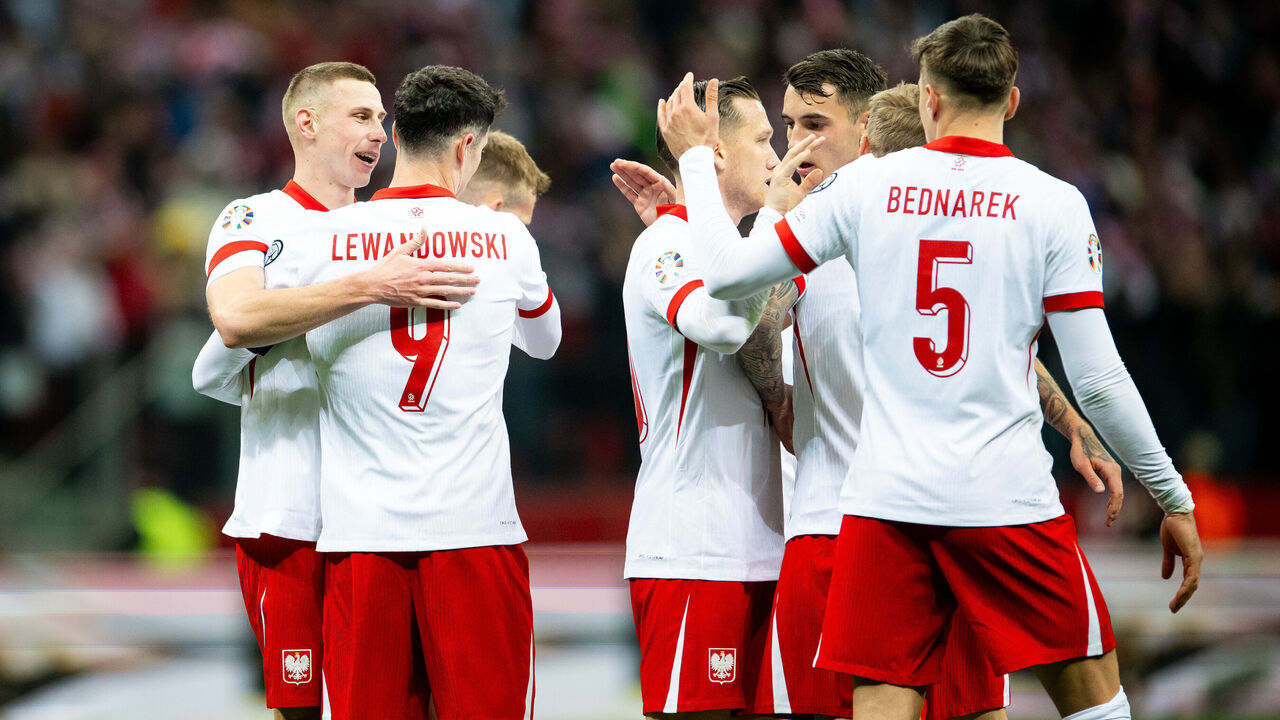
Poland 5-1 Estonia
Estonia barely stood a chance. Down to 10 men as early as the 27th minute, the northern Europeans could only muster a consolation goal in a 5-1 loss to Poland. The Polish achieved the rout without Robert Lewandowski getting on the scoresheet and remain unbeaten in 21 Euro qualifiers at home, a magnificent run dating back to September 2006. Poland is trying to make up for a poor qualifying campaign in which it finished third in Group E, four points behind the Czech Republic and Albania. The country hasn’t missed the Euros since 2004.
Wales 4-1 Finland
The Red Wall might descend on Germany this summer. Wales’ raucous supporters have legitimate hopes of traveling to another major tournament after the Dragons scorched Finland without the retired Gareth Bale and with Aaron Ramsey, 33, on the bench after more injury problems. Teemu Pukki gave the visiting team some hope just before halftime following well-taken finishes from David Brooks and Neco Williams. But Wales needed just 73 seconds of the second period to restore its two-goal cushion via Brennan Johnson’s tap-in. Daniel James took advantage of a defensive error before rounding the goalkeeper in the 86th minute to give the host a resounding victory.
Playoff final: Wales vs. Poland, Tuesday 3:45 p.m. ET
Path B
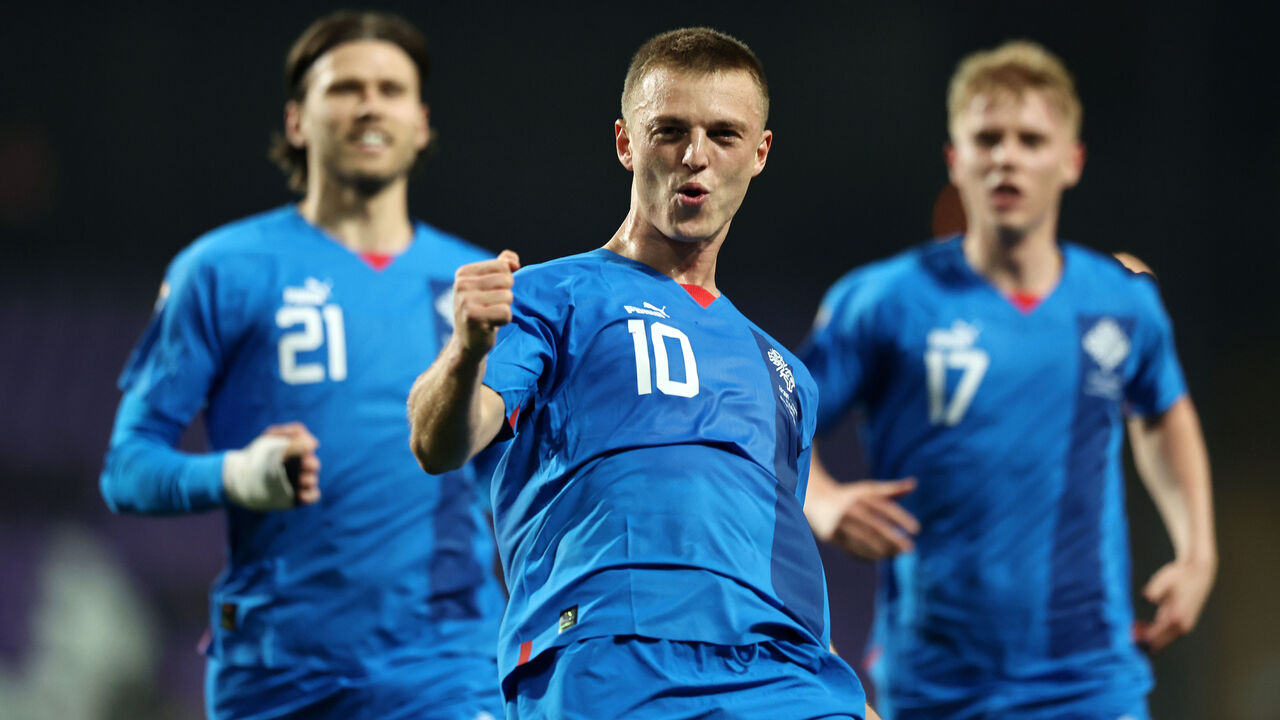
Israel 1-4 Iceland
Iceland’s Albert Gudmundsson stole the show with an emphatic hat-trick against Israel on Thursday. His stunning free-kick into the top right corner canceled out Eran Zahavi’s opening goal for Israel, and he created a nice cushion for his country with a pair of markers in the final 10 minutes. Just before that, Zahavi blew an incredible opportunity to equalize the match at 2-2, missing a penalty awarded for handball against Iceland’s Gudmundur Thorarinsson. A red card to Israel’s Haim Revivo didn’t help the trailing side. Iceland is now a game away from making only its second-ever appearance at the Euros following its quarterfinal run in 2016.
Bosnia and Herzegovina 1-2 Ukraine
Ukraine scored twice with just minutes remaining in regulation to snatch what seemed to be a sure victory from Bosnia and Herzegovina on Thursday. Bosnia controlled play for most of the match and took the lead in the 56th minute when Mykola Matviyenko turned in Amar Dedic’s shot into his own net. But a colossal defensive lapse cost the Bosnians a chance to make it a record four countries from the former Yugoslavia at Euro 2024. Roman Yaremchuk came off the bench to equalize in the 85th minute and teed up Artem Dovbyk’s sensational winning header three minutes later to turn the playoff semifinal on its head. Ukraine now faces Iceland with a third consecutive Euro appearance at stake.
Playoff final: Ukraine vs. Iceland, Tuesday 3:45 p.m. ET
Path C
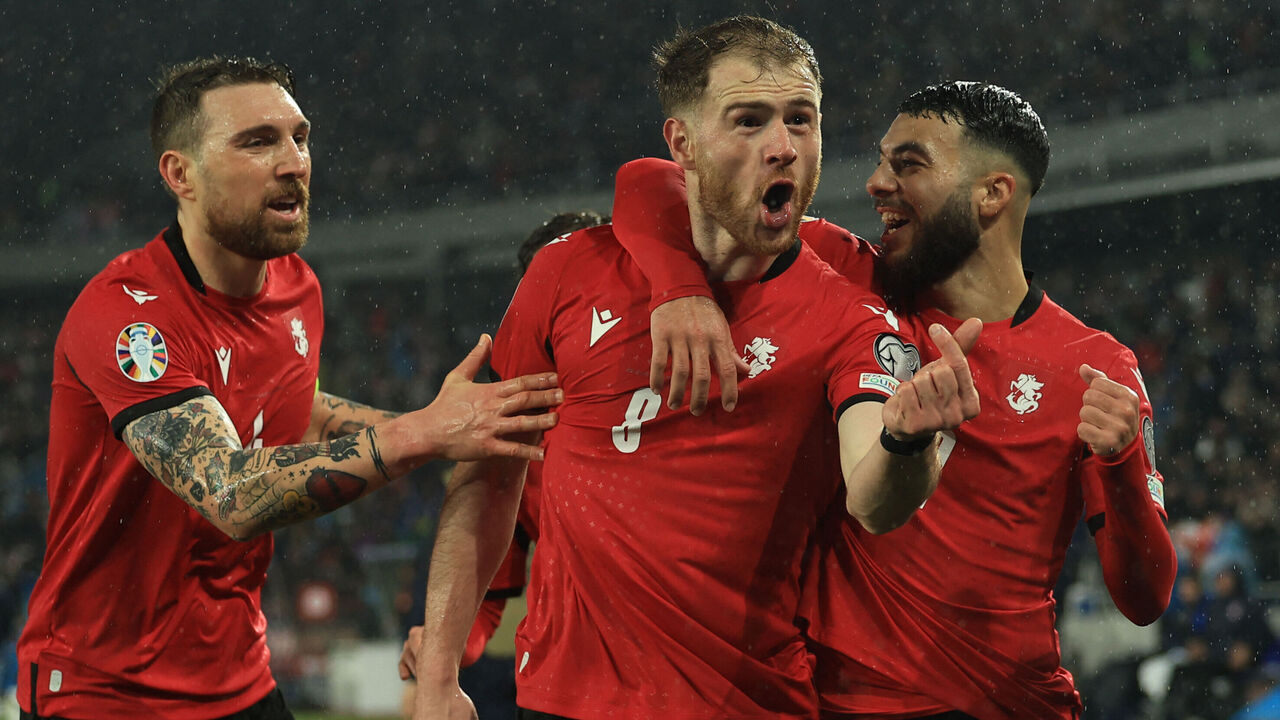
Georgia 2-0 Luxembourg
Two clever finishes from Budu Zivzivadze in Tbilisi assured Georgia of a place in Path C’s final – and all without the help of suspended talisman Khvicha Kvaratskhelia. But it wasn’t that simple for the host. Luxembourg thought it equalized during the second half, only for the goal to be eventually snatched away due to Maxime Chanot’s apparent foul 45 seconds earlier. Luxembourg’s Chanot was controversially sent off for denying a clear goal-scoring opportunity, and Zivzivadze effectively ended the match six minutes later with his second strike. Kvaratskhelia is available for the final.
Greece 5-0 Kazakhstan
Anastasios Bakasetas lashed home a penalty, Dimitrios Pelkas headed into the net’s roof, Fotis Ioannidis tapped in from close range, and Dimitrios Kourbelis added another header. And that was all before halftime. Kazakhstan’s impressive 2022-23 Nations League campaign and notable Euro 2024 qualifying wins over Denmark, Northern Ireland (twice), and Finland suddenly seemed ages ago, as Greece recorded its biggest halftime lead since October 1978 (5-0 against Finland). Aleksandr Marochkin’s embarrassing own goal in the 85th minute made Kazakhstan’s day even worse.
Playoff final: Georgia vs. Greece, Tuesday 1:00 p.m. ET
Copyright © 2024 Score Media Ventures Inc. All rights reserved. Certain content reproduced under license.
Premier League
Look: Nike unveils beautiful kit selection for Euro 2024, Copa America
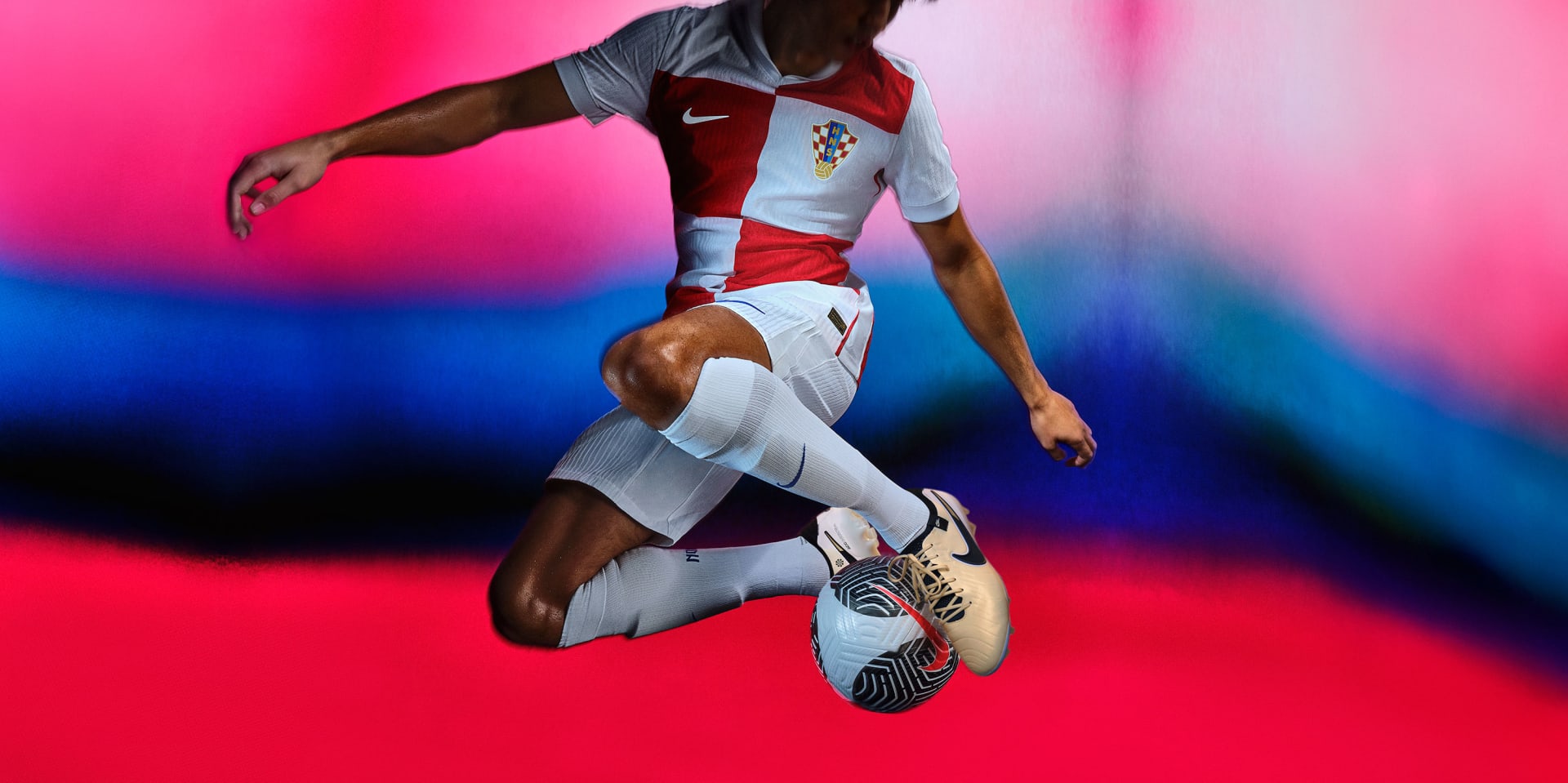
Find the biggest stories from across the soccer world by visiting our Top Soccer News section and subscribing to push notifications.
Nike released a stunning batch of threads ahead of Euro 2024 and Copa America on Monday.
Days after Adidas launched its lineup for the summer’s top two tournaments, Nike followed suit with an array of colorful designs.
The U.S. manufacturer also announced redesigns for Canada and Poland, even though they’ve yet to qualify for their respective tournaments. The Canucks face Trinidad and Tobago in a one-off Copa America qualifier on Saturday, while Poland must navigate a four-team playoff to reach Euro 2024.
(All images courtesy of Nike)
Euro 2024
Croatia
Home
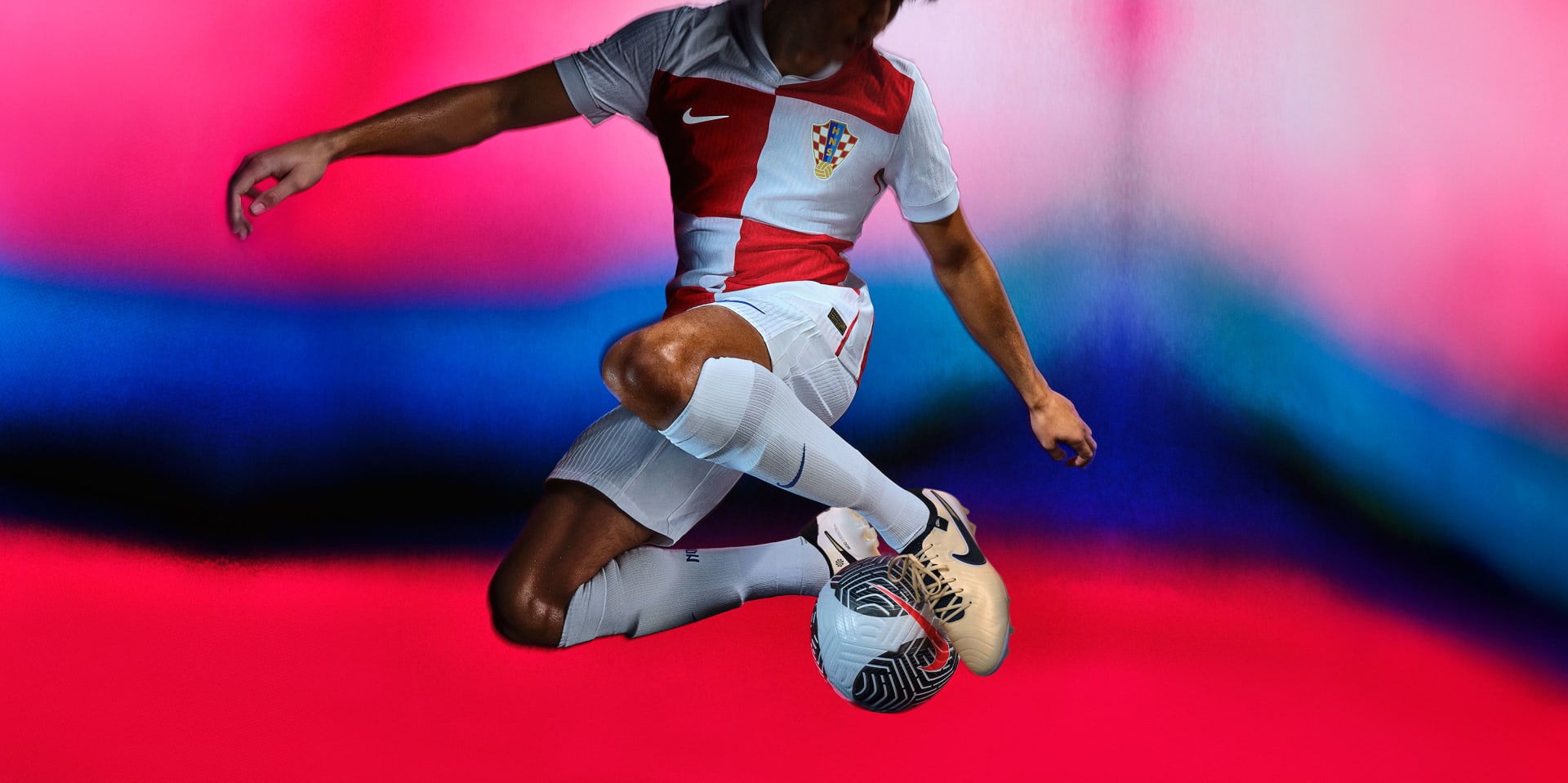
The square-shaped design that gives Croatia its unique look gets a slight upgrade. The home shirt features larger squares than ever before.
Away

Croatia’s away shirt plays on the national flag, with the traditional checkered pattern now on a slant.
England
Home

Influenced by England’s 1966 training gear, the home shirt has a classic feel with a rich blue collar and gorgeous trim along the cuffs.
Away
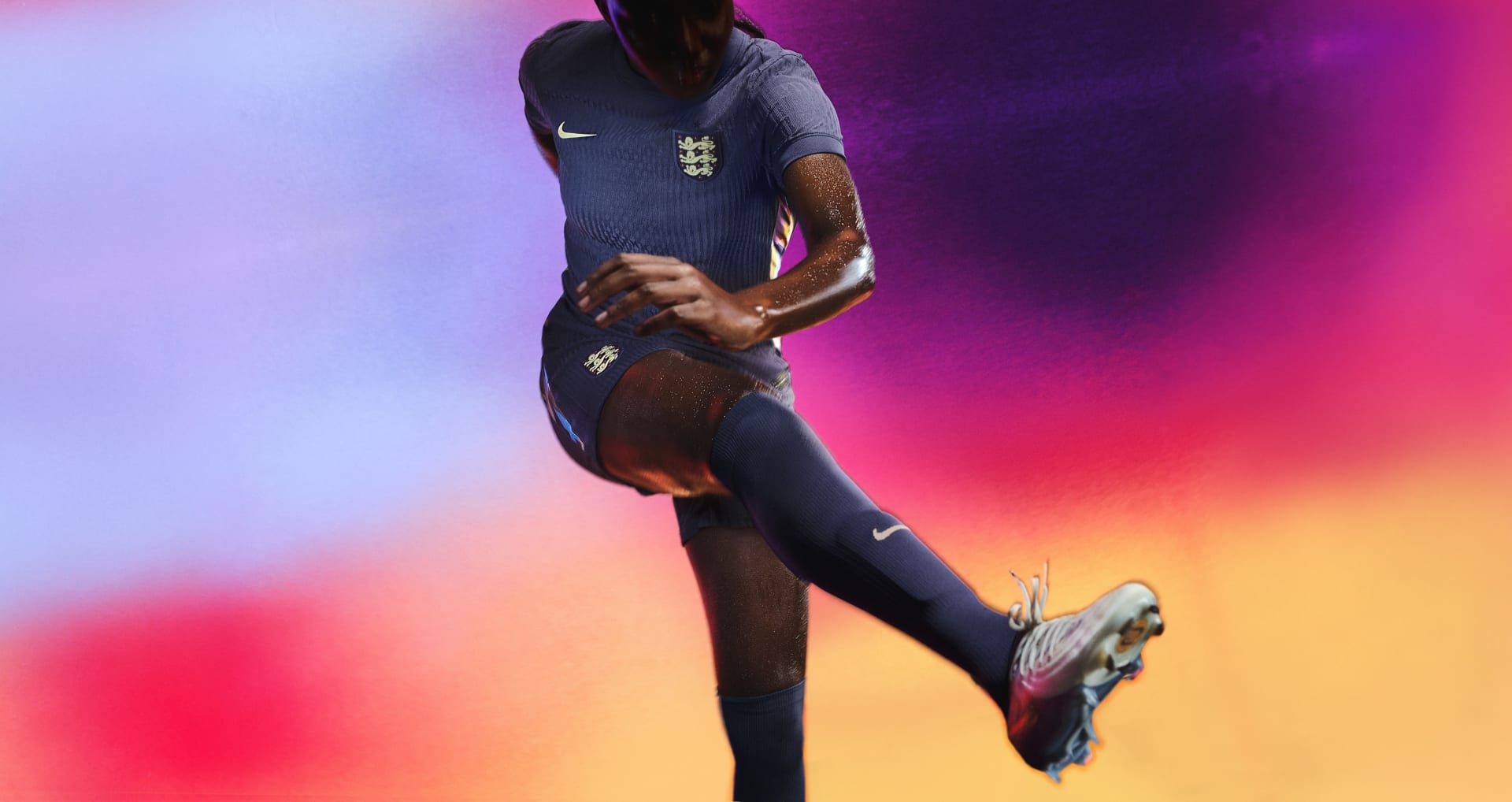
England embraces a deep purple hue for its away selection. The crest stands out with a contrasting off-white tint that makes the three lions pop.
France
Home

France’s home shirt may have the biggest crest of all of Nike’s offerings. The oversized rooster defines this shirt as much as the royal blue that’s made France’s kits a crowd-pleaser.
Away

The pinstripes mirror the colors of France’s national flag and span the width of the shirt in a simple, yet elegant design.
Netherlands
Home
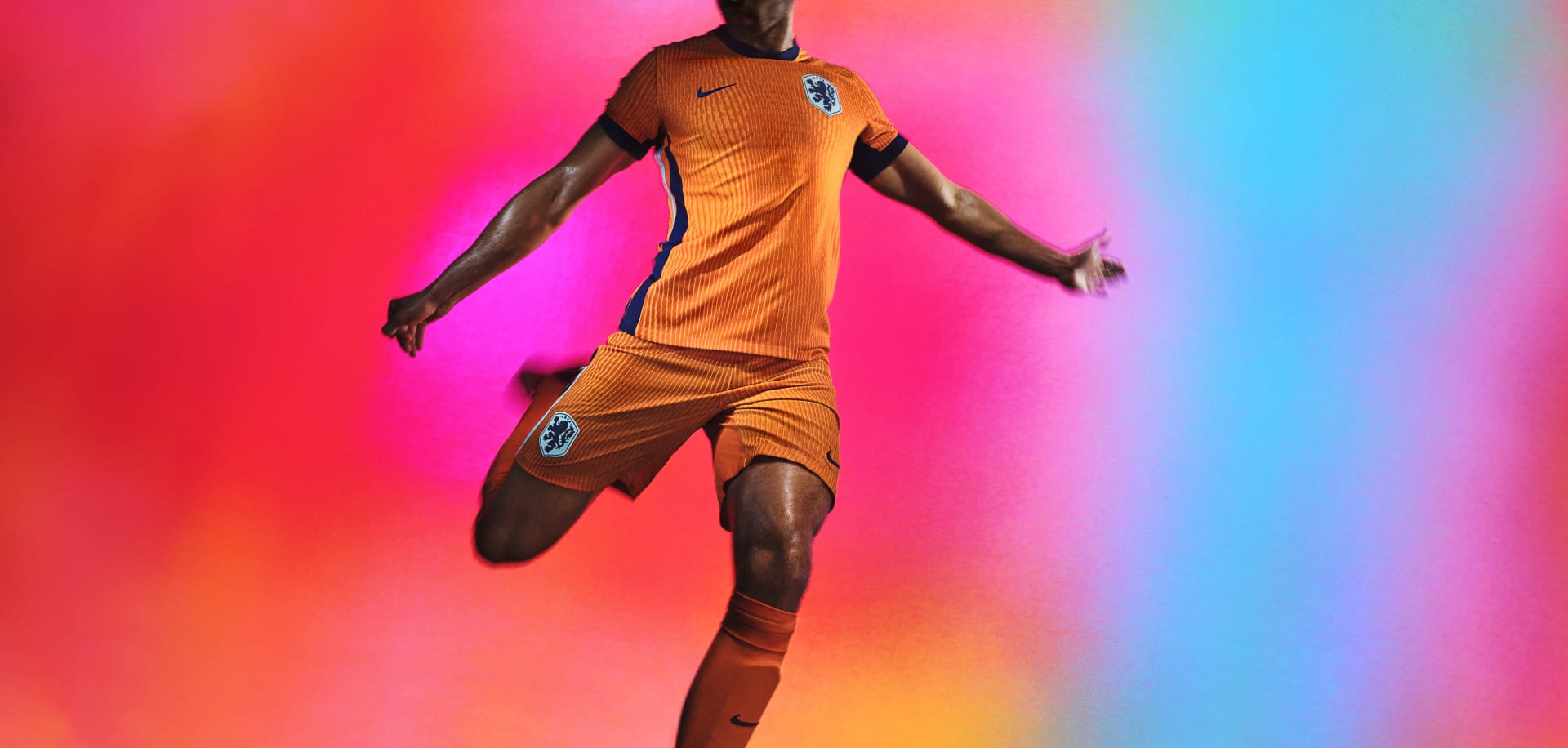
Nike could’ve offered anything orange here, and it would’ve been perfect. But the Netherlands has something bolder and better to wear. The zig-zag pattern adds edge.
Away

The orange collar and cuffs pop alongside the three shades of blue Nike has chosen to create the abstract design on this work of art.
Poland
Home

Poland dedicates premium real estate on the country’s home shirt to its imposing crest.
Away

Poland’s away shirt is a daring choice. The graphic treatment adds texture, giving it a rugged feel while separating from the red tones of years past.
Portugal
Home

With possibly the best home shirt in Nike’s collection, Portugal leans heavily into its traditional red-and-green motif with a polo collar and thick cuffs. The logo sits prominently as well. A smash hit.
Away

Here’s another winner. Portugal’s away strip has a stunning textile imprint that gives off a cool summer vibe.
Turkey
Home
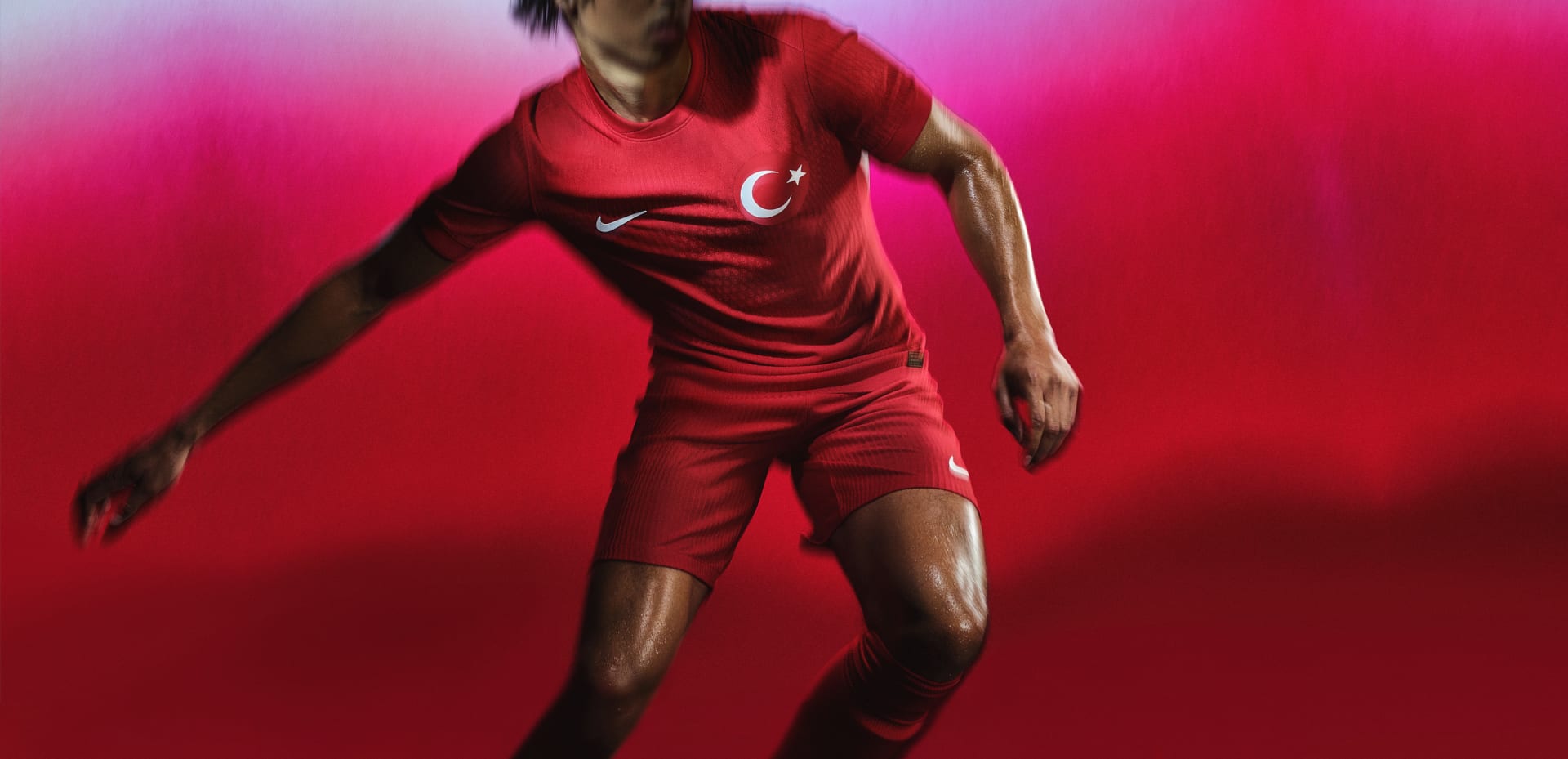
This is a menacing look. Turkey will look like a whirring red army with these imposing shirts.
Away

The classic red band returns to Turkey’s away uniform. Like the others, it features an oversized crest in the middle of the shirt.
Copa America
Brazil
Home

Nike goes big with Brazil’s crest and adds an intricate design to the same yellow hue the Selecao have used for decades.
Away

Brazil’s secondary strip feels like the beach. A horizontal wavy pattern covering the entire shirt mimics the country’s picturesque coastline.
Canada
Home

The only blemish in Nike’s lineup. Why is there a circle around the swoosh? And why are the shoulders so much darker than the body? None of it makes sense.
Away

The 13 pinstripes are supposed to represent the 10 provinces and three territories that make up Canada. Unfortunately, the rest of the shirt looks incomplete.
United States
Home

The United States men’s national team gets a classic home shirt with patriotic detailing along the color and sleeves.
Away

The gradient works perfectly with the red shorts the U.S. will wear at the Copa America.
Copyright © 2024 Score Media Ventures Inc. All rights reserved. Certain content reproduced under license.

Breaking down thrilling EPL title race with 10 games left

Euro 2024 playoffs: Miraculous Ukraine comeback, big result for Wales

Managerial merry-go-round: Predicting hires for marquee jobs

The Champions League's best XI so far

Ready Newest Trainer in Bundesliga History, retire SOLSKYER.

35 stars who will define the summer transfer window
Trending
-
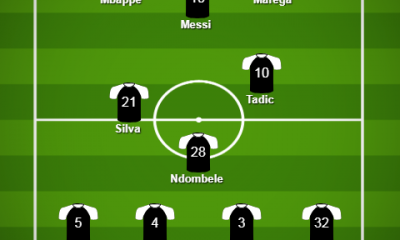
 Champions League7 years ago
Champions League7 years agoThe Champions League's best XI so far
-

 Sports6 years ago
Sports6 years agoReady Newest Trainer in Bundesliga History, retire SOLSKYER.
-

 Serie A6 years ago
Serie A6 years ago35 stars who will define the summer transfer window
-

 Serie A7 years ago
Serie A7 years agoAjax show Juventus that winning requires more than individual quality
-

 Uncategorized5 years ago
Uncategorized5 years agoIFFHS publishes the list of top scorers in football history – Romario first, Ronaldo third
-

 Premier League6 years ago
Premier League6 years agoTransfer grades: Assessing Hazard’s move to Real Madrid
-

 Sports6 years ago
Sports6 years agoWenger: Hazard can’t replace Ronaldo.
-

 La Liga2 years ago
La Liga2 years agoLook: Adidas drops huge collection of new kits for Euro 2024, Copa America

